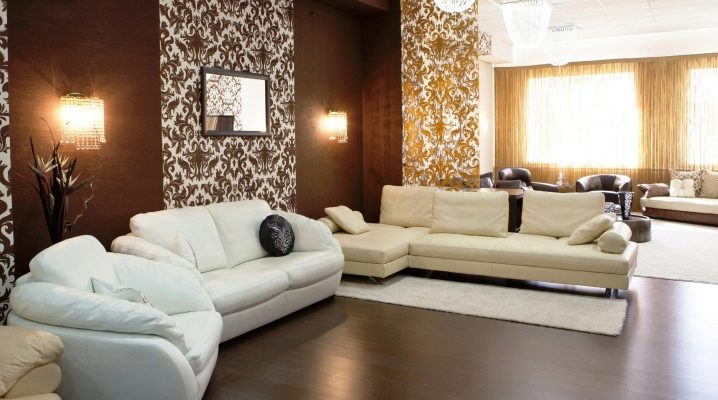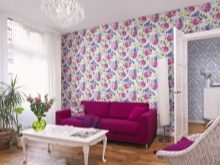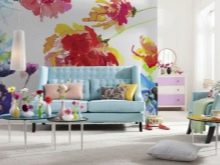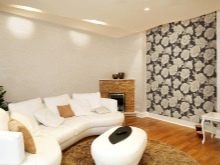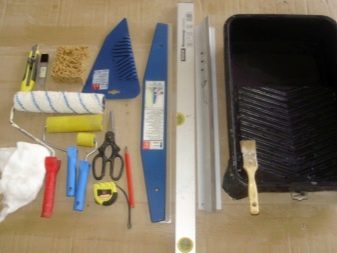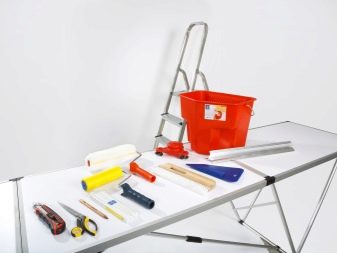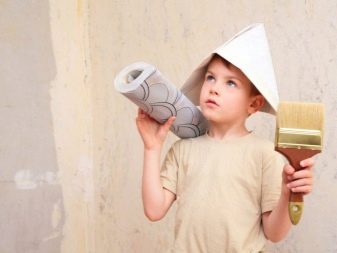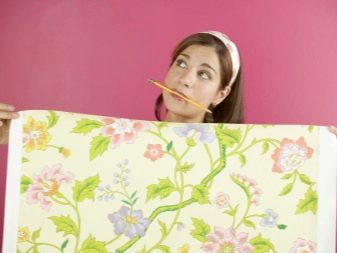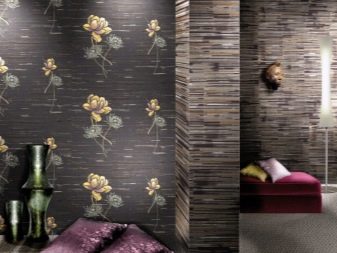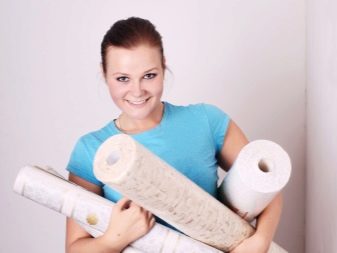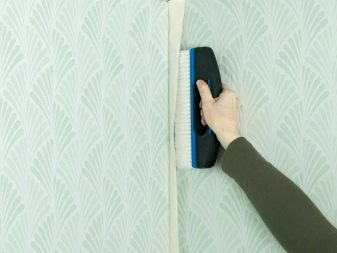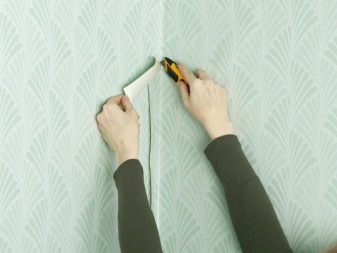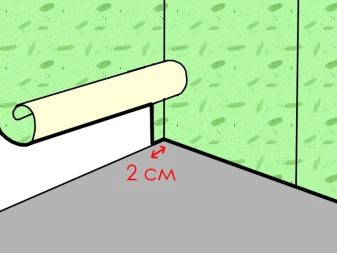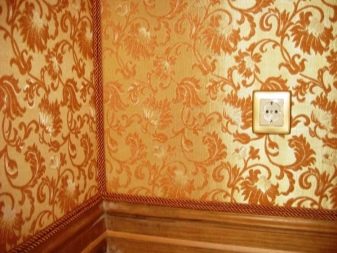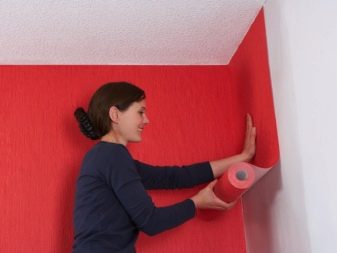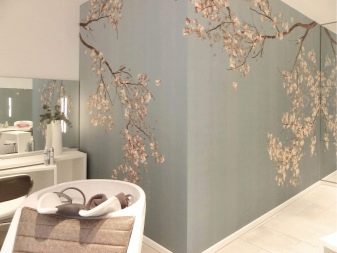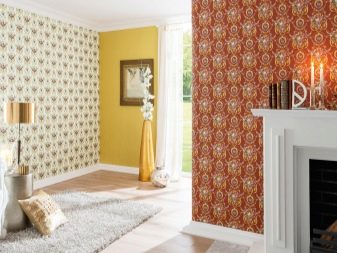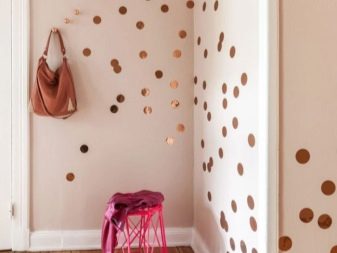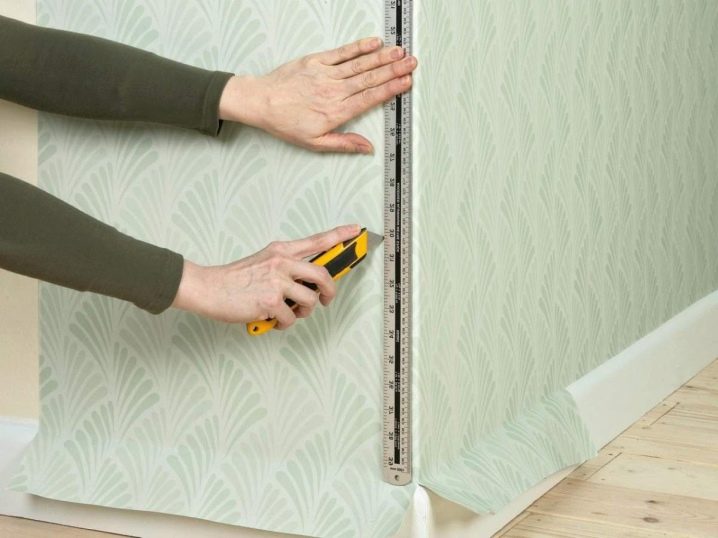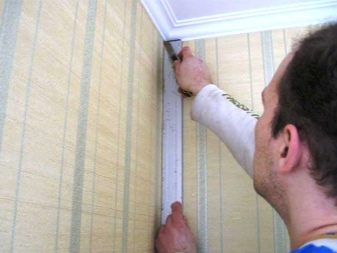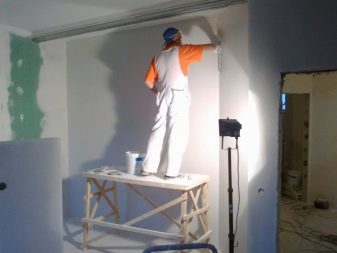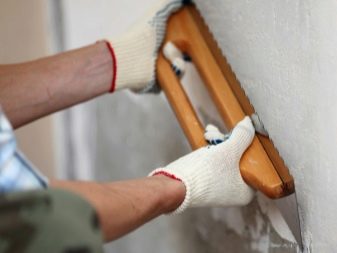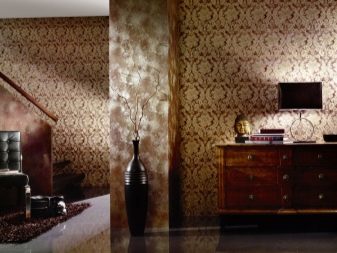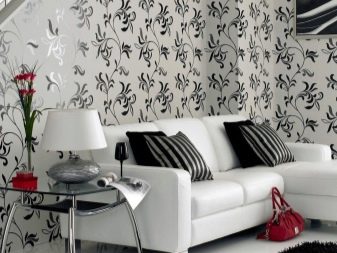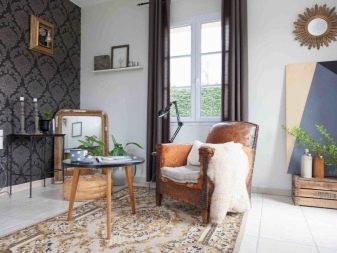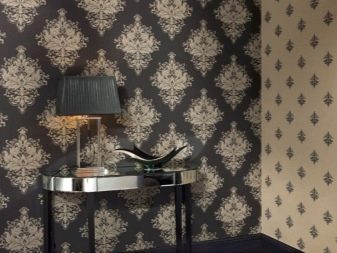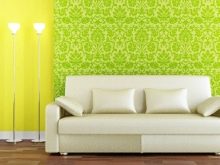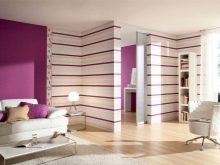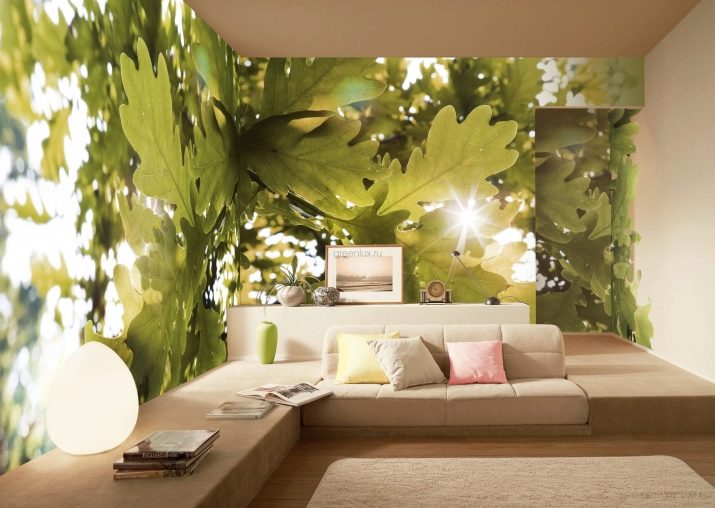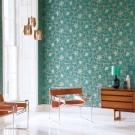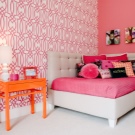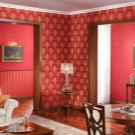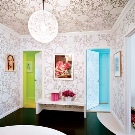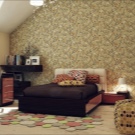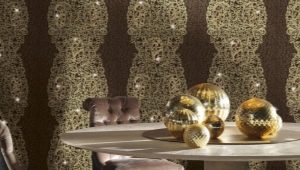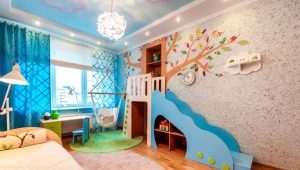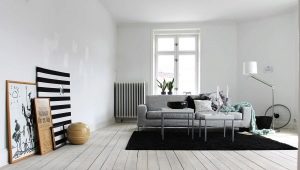How to glue wallpaper in the corners?
Wallpapering walls - an affordable modern means of interior decoration. Depending on the material used, you can hide some flaws and defects of the walls. People involved in the repair know that the wrong technology of applying wallpaper and haste lead to ugly consequences, a waste of time and effort.
Before proceeding to work, read the instructions for applying wallpaper on the walls.
From what angle to start?
Properly hung wallpaper will look perfect in the interior of the house. For work you will need:
- wallpaper;
- wallpaper glue;
- ruler;
- roulette;
- dishes for breeding glue;
- pencil;
- roller and brush (different sizes);
- soft dry cloth or wallpaper brush (to remove air bubbles);
- sharp stationery knife;
- stepladder or chair.
Many recommend starting work from the door, and someone from the window. In fact, the opposite is true.Previously produced canvas with a special edge for overlap. Therefore, it was necessary to begin sticking to the far wall with a window. Now make different types of wallpaper, preferably that butt glue.
In no case can not begin to glue the material from the corner. Be sure to align the walls and primed. Sticking wallpaper on uneven walls is not only difficult, but in some cases impossible.
For those who prefer to overlap, the first roll should be glued from the window. If you are not confident in your abilities, better start from the doorway.
The main thing is to glue the first roll, then push off from it.
Glueing rules
The industry makes various types and types of wallpaper. There are coloring wallpaper - non-woven. The advantage is that they can be painted in any color. Economical way to interior decoration, because the costs occur only on the paint.
Applying wallpaper requires sequential actions:
- wall preparation;
- temporary removal of baseboards (if possible);
- dilution of glue according to the instructions on the package;
- greasing of a cloth (sometimes greasing of a wall is required);
- drawing a roll on the wall from top to bottom;
- removal of air bubbles and folds.
The rules for gluing simple wallpapers (53 cm wide) differ from the meter ones (1 meter wide). At first glance it seems that meter materials are much harder to glue.
It turns out that this is quite simple if you understand how to glue ordinary wallpaper.
There are a number of advantages that will change your opinion:
- less time and effort;
- cheaper than standard wallpaper;
- creating a seamless effect;
- high quality (made in Belgium, Italy, France);
- creating an interior for every taste.
Before buying wallpaper, be sure to calculate the expense. To do this, apply the formula from the geometry: (wall + adjacent wall) x 2. And remember that the length of one canvas on the wall is taken with a margin of 5 cm. Always take a spare roll so that there are no shortcomings when pasting door jamb and ledges. Be sure to read the length of the canvas on the roll in the instructions.
A prerequisite for safety is de-energizing the apartment or house. After disconnecting, remove the top panels of the sockets and switches. Starting sticking, you must clean the room from dirt and dust.
To tear off old coverings of wall-paper by means of ordinary warm water.Wet the coating with water using a spray gun and wait 20 minutes, after which the wallpaper will easily move away from the walls. Remove the paper with a knife or spatula. Vinyl cloths are easier to tear off by punching.
It is much harder to get rid of paint. To do this, use a grinding machine or a drill with a special nozzle, but it is better to use chemical solutions for removing paint and varnish products.
With the wet method of removing old coatings less dust is formed, and the plaster does not peel off. After removal of the old coating, it is necessary to eliminate and repair the weak points (cracks, hollows, bulges).
Be sure to align the walls and primed. Sticking wallpaper on uneven surfaces is not only difficult, but in some cases it is impossible to carry out. Particularly difficult for beginners in this business is the question of pasting the outer and inner corners.
Inner corner
Action technology:
- Applying glue to the canvas or, if necessary, to the wall. Carefully lubricate the wall joint, as this is the most time consuming part in the corner.
- The canvas is glued in such a way that it sets on the adjacent wall by 4-5 cm.
- Knowing the width of the material, stick the following wallpaper (2-4 cm) over the previous one.
- The protruding parts are cut off, and the upper material is glued in place.
If there are sockets or switches in the corner, it is necessary to cut a round hole (smaller than the switches) from the web at this place.
The presence of rounded corners contributes to the formation of air voids. Be sure to make an incision in this area and stick the material tightly. More adhesive is applied to this area.
Outer corner
The outer corner is especially noticeable in the apartment, so it requires strict accuracy.
There are 2 types of sticking of external corners depending on the unevenness of the angle:
- If the angle is flat, the sheet is glued so that it protrudes by 3-4 cm on the adjacent side. Next, the process of gluing by standard technology.
- Uneven walls. In this situation, the protrusion of the canvas on the adjacent wall increases (4-5 cm).
It is necessary to measure the width of the cloth and retreat another 5 mm. Thus, sticking will overlap.
A cut is made in the middle of the overlap. Remove the upper part of the wallpaper, remove the protruding part of the canvas.After removal, glue the top sheet into place.
On the convex surfaces of the wall make cuts, and tightly pressed material to the wall. These methods are designed for overlapping (for wide wallpaper). The drawings of these wallpapers are designed to hide flaws and projections.
For standard paper canvases, these options will not work. In this case, the first option is used with gluing butt.
If the walls are uneven
Ideal flat walls are a rarity. Small errors in the irregularities of the walls are permissible, but with large deviations and noticeable curved surfaces it is impossible to hide this when sticking wallpaper. On the contrary, distorted view of the interior room.
In that case, if there are cracks, it is necessary to seal them with cement mortar. At insignificant cracks use plaster plaster. Also, wallpaper stick beautifully and qualitatively fail. The view will not match the expected results. In such cases, preparatory work is required. Assistant in this you will putty.
Application rules:
- clean the surface from dirt and dust;
- tear off the old coating (if any);
- apply antibacterial impregnation;
- prograntovat wall;
- apply 1 layer of starting putty;
- attach the paint grid over the putty (from cracking);
- apply a second layer of putty;
- lubricate with two layers of finishing putty (thickness 2-4 mm);
- after complete drying, wash with a primer;
- remove all roughness and uneven surfaces with emery cloth.
It is recommended to remove grains of sand and dirt, as this may be the reason for peeling the material from the walls.
How to stick a model with a picture?
Gluing the corners with wallpaper is in itself a difficult job, especially for a beginner.
Monochromatic colored wallpaper - the perfect way out. But you can bring animation into the interior only with the help of a drawing. Also in some cases, such models may cover irregularities. Do not forget that the canvas is glued overlap, otherwise the picture will add a clumsy look to the interior, and all the flaws will be visible.
You can use the method of selection of the pattern, not forgetting that the cloths are glued with overlap, and they must be cut off. Figure should be of medium size and go strictly on the plumb line. Large or too small pictures add distortion.
A selection of different colors can be achieved by dividing a room into zones without resorting to additional costs (arches, partitions). It is important that the colors harmonize with each other.
Recommendations
Uneven walls and corners are found not only in old buildings, but also in modern new buildings. It is because of this lack of problems with interior decoration. To avoid the sad consequences, you should follow the rules:
- In order to keep the wallpaper on the outer corners better, it is necessary to press them against the wall as tightly as possible. To glue wallpaper from top to bottom, gradually dropping to the floor, thereby avoiding the appearance of folds.
- If glue gets on the face of the material, immediately remove it with a soft cloth. The front sides of some types of cloth come into disrepair from wallpaper glue.
- At detection of an air bubble it is necessary to pierce it. Using a syringe, insert glue and smooth.
- The inner corners of the room are the most problematic, it is in these places that sticking, bloating, breaking occurs. For effective and reliable gluing of the corners, add PVA glue (10%) to the water when preparing the glue. Glue to mix until smooth, so that there are no lumps.
- Make sure that there are no drafts. They prevent complete and uniform drying, after which the material is peeled off. Airing the room is allowed only after the wallpaper has completely dried. This occurs within 2-3 days.
- In order to better glue the area with windows and wooden openings, the canvas must be taken with a margin and let it dry completely. Only after that, carefully cut off the extra material with a stationery knife.
- Unevenness of the wall is not always noticeable. Only when pasting the inner and outer corners will be visible flaws and incorrect convergence. To prevent these defects, immediately before work, be sure to check the curvature of the walls with the help of a building level and plumb.
- In the presence of thermal heating, use a thin narrow brush to lubricate the glue.
- If in the area of gluing wallpaper there are batteries or pipes, wrap them with a cloth. This is to prevent uneven drying.
- A suitable temperature for repair work is from + 15 ° С to + 25 ° С. It is not necessary to accelerate the process of drying the coating; peeling and displacement of materials may occur. The humidity of the air in the room should not be more than 60%, as it reduces the adhesive substances.
- Before starting to dry the surface of the walls.
- The canvas for the corners is better to choose the average density.
- The thicker and denser the web, the thicker the glue solution is prepared.
- It is recommended to paste over one room in one approach. Thus, the coating will be better kept and the joints will not stand out.
Stick the wallpaper with their own hands and create an unusual interior in the house can even beginners in this business. The main thing is to follow all the rules and recommendations.
You will learn more about how to glue wallpapers in the corners in the following video.
